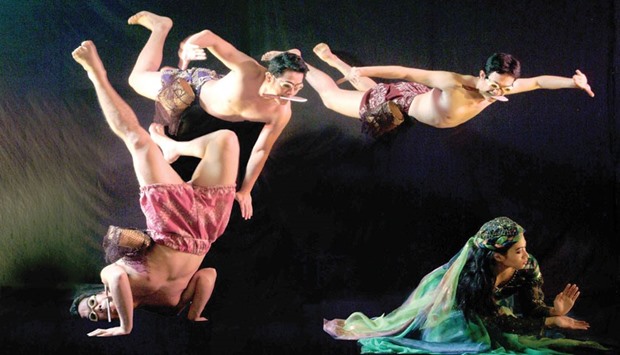With the very promising Cultural Diversity Festival being launched at Katara last morning, the Filipino community of Qatar is especially elated about reveling in the performance of the oldest and arguably the most celebrated dance company in the Philippines, Bayanihan Dance Troupe, today and tomorrow, at 7.30pm.
Organised as part of the Intercultural Dialogue and Cultural Diversity Programme of Unesco in Qatar and funded by Katara in order to promote cultural diversity and cross-cultural understanding and awareness, the festival is all set to bring performing groups from a total of 20 countries, representative of all continents, to Katara to perform three days each. The performances will be organised every week until May 25 to mark the World Day for Cultural Diversity for Dialogue and Development on May 21.
Flagging off the festival in pomp and splendour is a dance troupe from Philippines that is as representative of the land’s cultural riches as it can get. Today and tomorrow, at the Esplanade in front of the Katara Amphitheatre, starting 7.30pm, the Philippine national folk dance company Bayanihan will take the Doha audience into folklore and beyond. The entry is free.
Drawing its name from an ancient Filipino tradition called Bayanihan, which means working together for a common good, Philippines’ most famous folk dance troupe has wowed the world with its eye-catching costumes and stunning physical feats.
It was Dr Helena Z Benitez who founded the Bayanihan Folk Dance Group of the Philippine Women’s University in 1956. The following year, it was formally organised as the Bayanihan Folk Arts Center with the Bayanihan Philippine Dance Company as its performing arm.
“Both the centre and the dance company were tasked to research on and preserve indigenous Philippine art forms in music, dance, costumes and folklore; to restructure and enhance these research findings to evolve repertoires suited to the demands of contemporary theatre; and to promote international goodwill through performances at home and abroad,” says a note on the dance company by the Cultural Centre of the Philippines.
Since its formal organisation, Bayanihan has gone on 14 major tours – each lasting anywhere between six months to a year – to Asia, Australia, Africa, Europe, the Middle East and Americas, apart from around 100 short tours to foreign countries. If that doesn’t put Bayanihan’s globe-trotting feats in perspective, this would: In half a century, Bayanihan has performed in six continents, 66 countries and 700 cities across the world.
The multi-award winning company, both nationally and internationally, Bayanihan has “awakened a new pride among Filipinos in their cultural heritage,” the note further points out, saying it has also added a new dimension to the country’s dance tradition and has built a rich reserve of international goodwill. As the Washington Post remarked in its piece on the troupe in 2001, “At 44, Bayanihan is looking as pretty and gracious as ever.”
Wilfredo C Santos, Ambassador of the Philippines to Qatar, told Community, “We congratulate Unesco and Katara Cultural Village for holding the Cultural Diversity Festival which includes the performance of Bayanihan. Events like these allow different countries, including the Philippines, to showcase their culture and thus create increased awareness and a better appreciation of these divergent cultures for the benefit of Qataris and the expat communities in Qatar. In my view, the sharing of cultures in the form of performing arts is an ideal way to bridge gaps and differences, further strengthen ties among nations, and build new acquaintances and promote tolerance in our multi-cultural society.”
In a detailed piece on this cultural heritage, Bayanihan: The Treasure Chest of Filipino Dances and Culture, Guillermo Gomez Rivera wrote, “When there was none and no one, there came Bayanihan, the Filipino Dance Troupe. And this happened half a century ago. This is why Bayanihan today is the depository of almost all Filipino dances, dresses and songs.”
Rivera further observed, “In the 1960s, National Artist Lucrecia Úrtula went to Mindanao, to the Cordilleras, and to almost every island to look for katutubo ethnic Filipinos to dance for her, their own ancestral ethnic or tribal dances. She noted them down and captured their movements and translated them into the stage for the Bayanihan dancers to revive, to interpret, and preserve up to the present time and for posterity.”
Unfortunately, today, the descendants of those katutubo ethnic dancers of 50 years ago, have literally lost their indigenous roots along with their vernacular languages, dances and songs, feels Rivera. “Their assimilation into the ‘new Americanised culture’ through education in compulsory English, or the pervasive media, has made them forget their memory about themselves. Thus, any Filipino dance troupe that came, or comes, after Bayanihan was founded, will have to copy those dances compiled and translated to the stage by National Artist for Dance, Lucrecia Úrtula.”

BEWITCHING: The Bayanihan dance troupe in action. Photo courtesy: Sony Centre for Performing Arts
